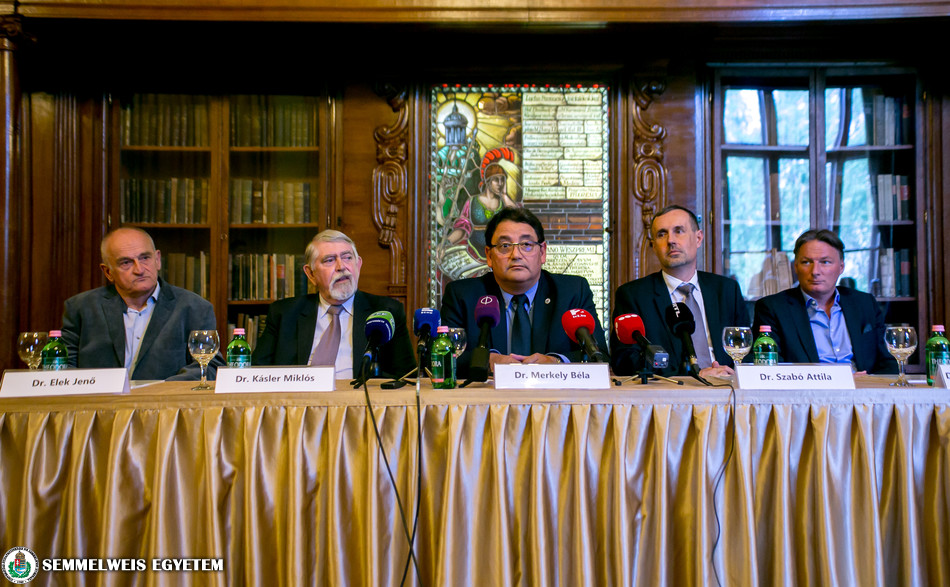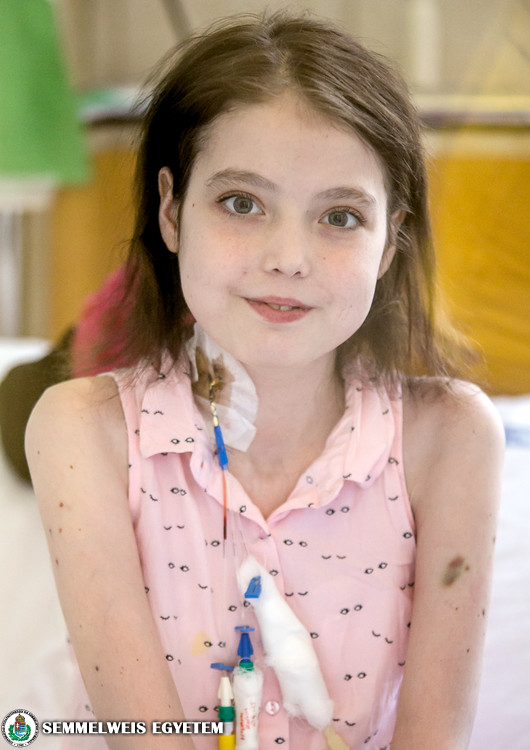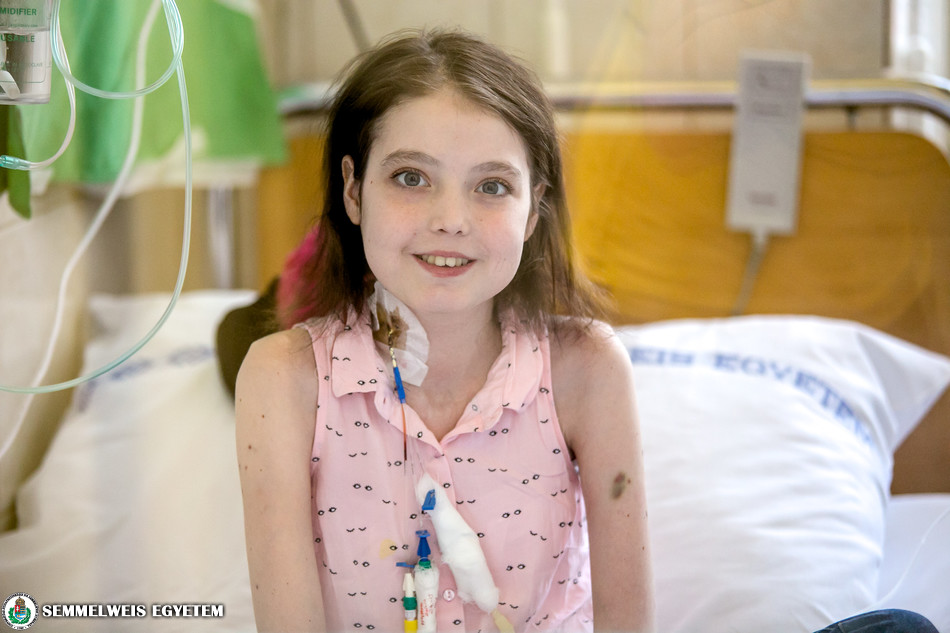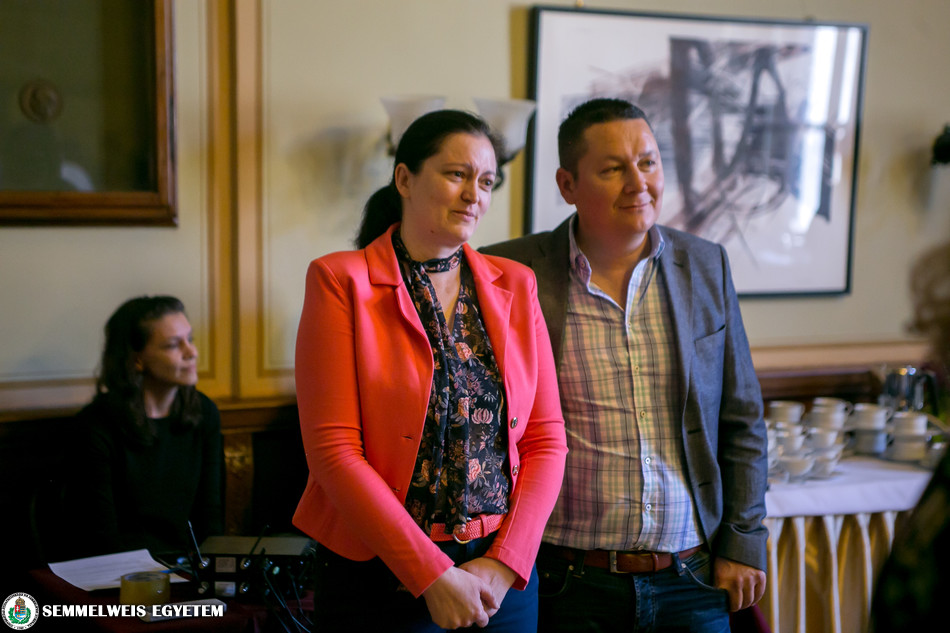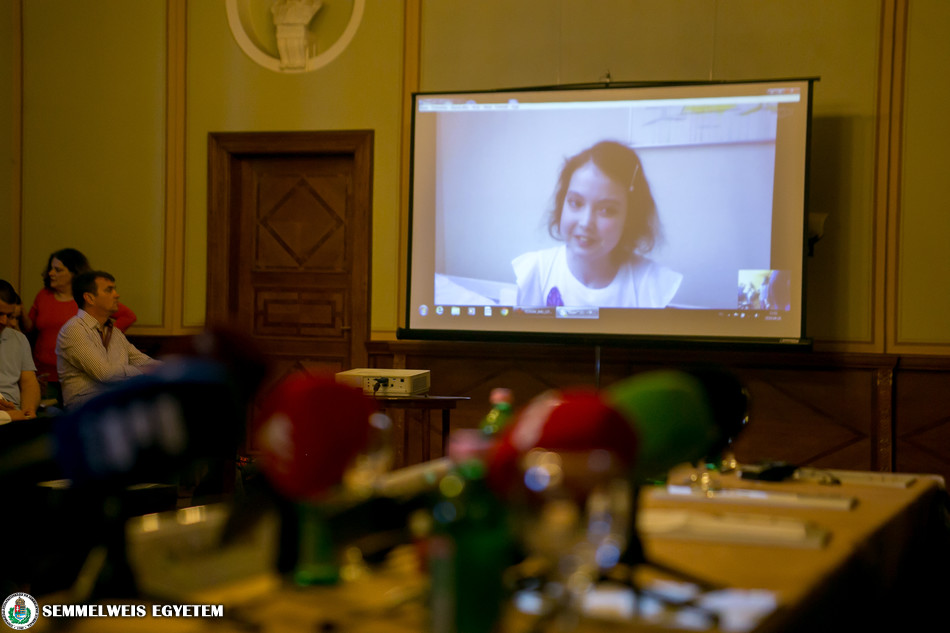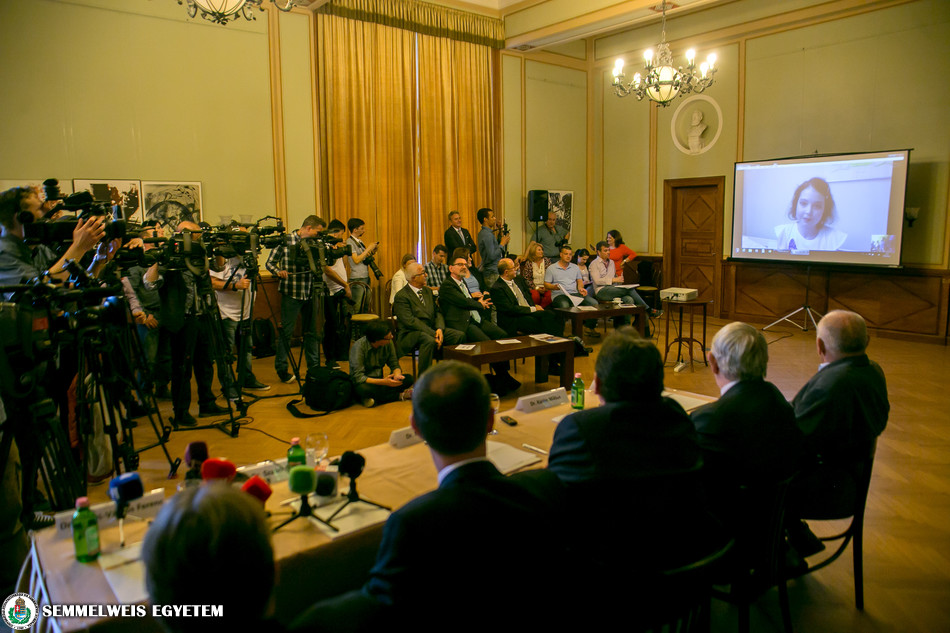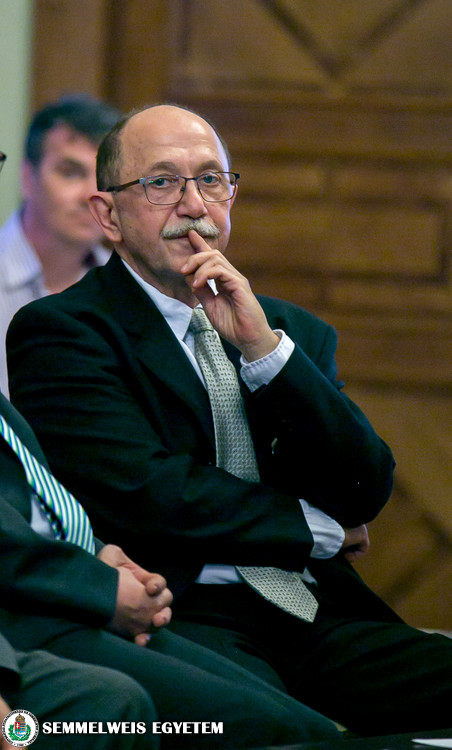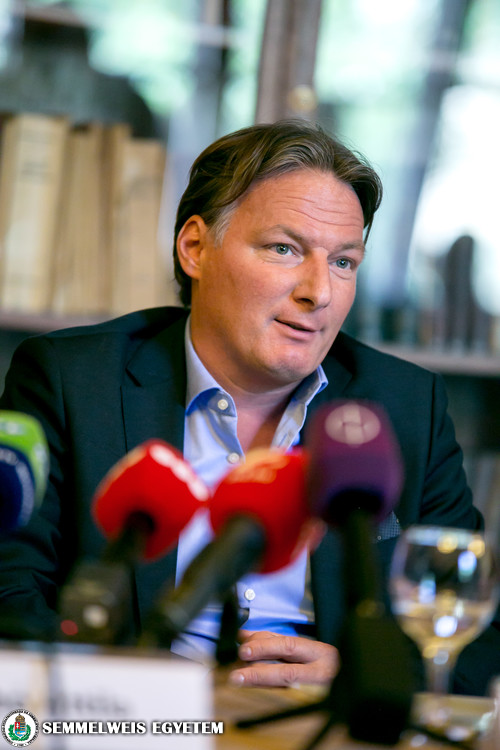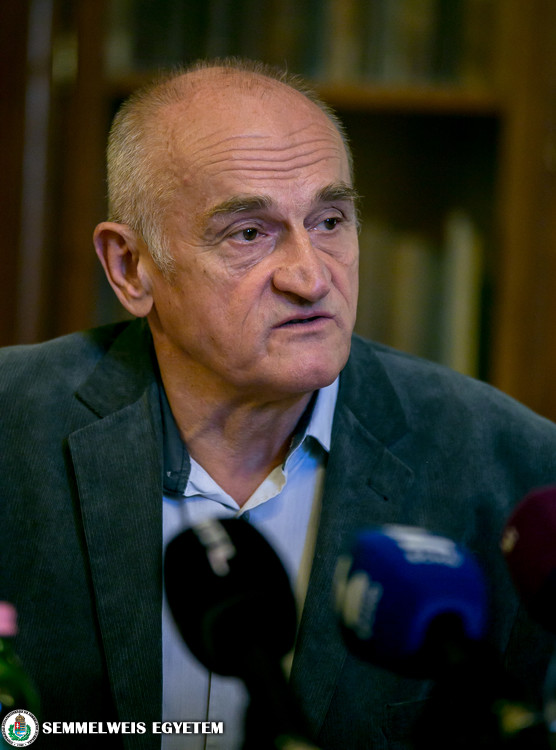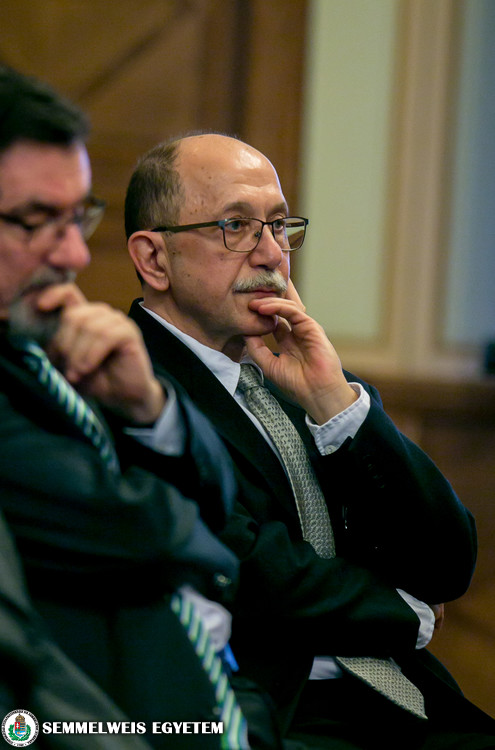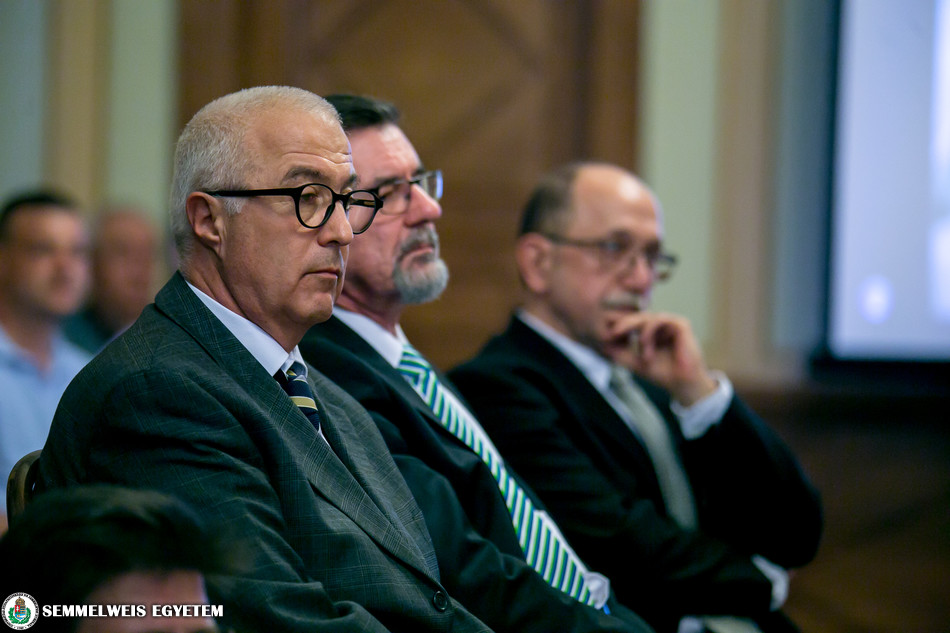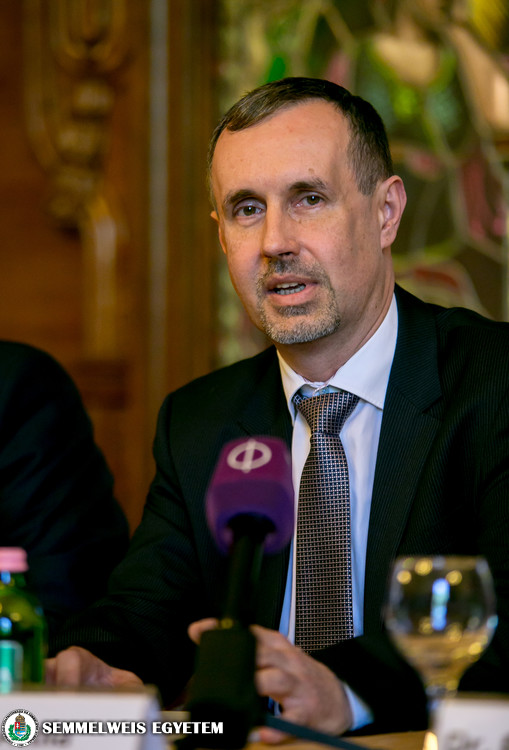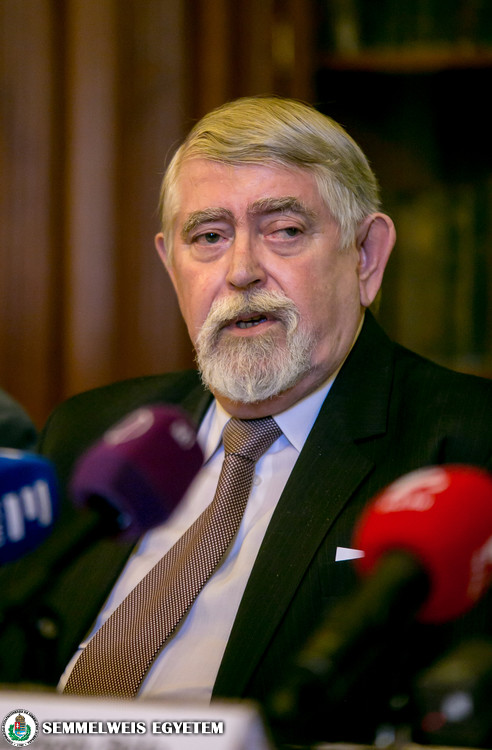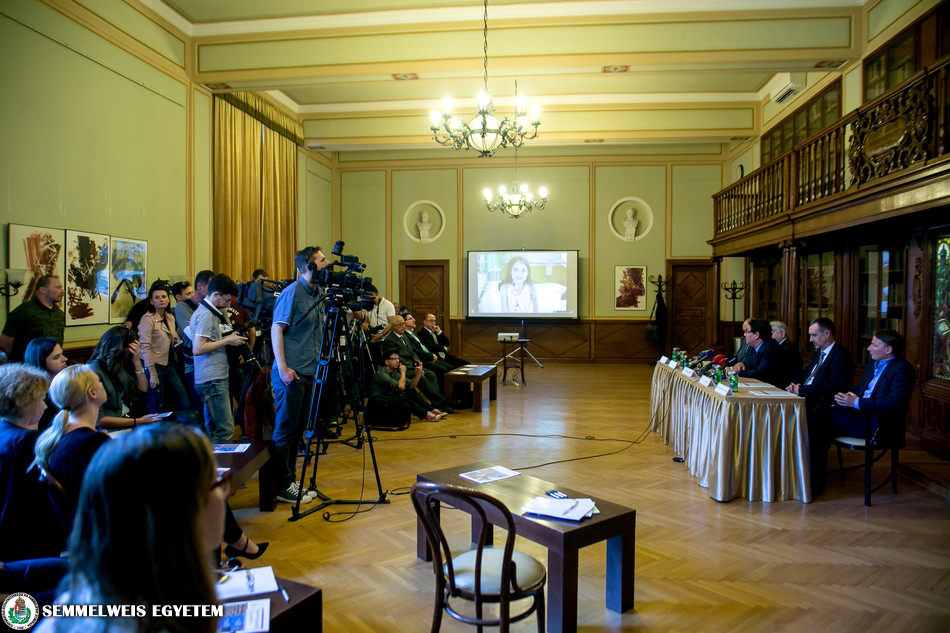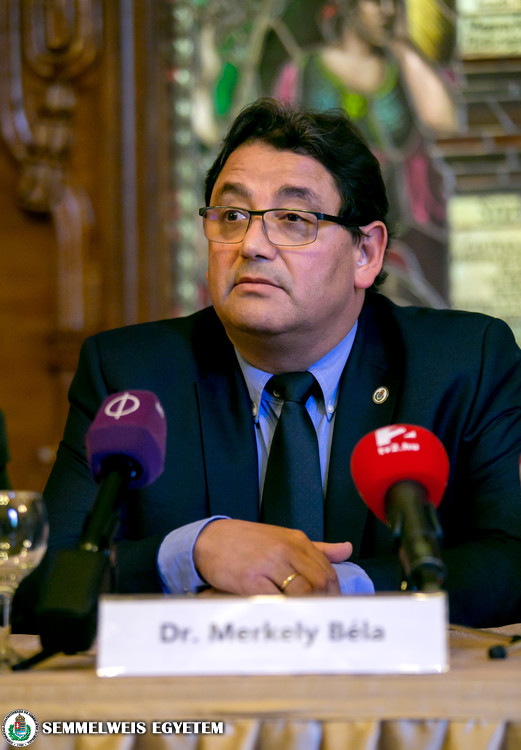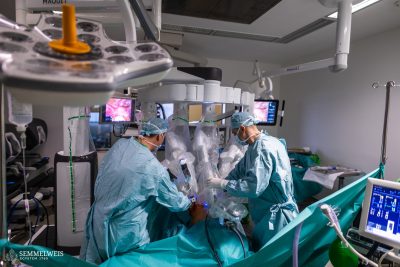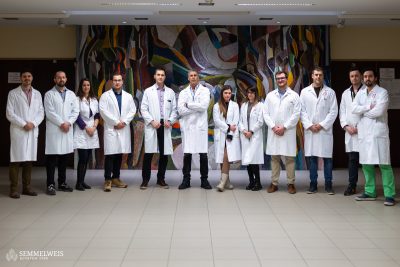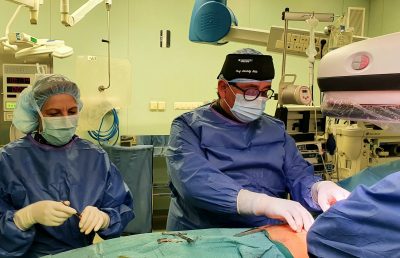The first lung transplantation on a child in Hungary was carried out at the end of March in the cooperation between the National Institute of Oncology (NIO) and Semmelweis University. The 13-year- old Dorka Máté needed this intervention because of cystic fibrosis. The employees of NIO and Semmelweis University reported the pioneer role of this operation at a press conference.
Dr. Béla Merkely clinical Vice-rector evoked that in the last six months several donations took place in Hungary with significant importance. E.g.: the 500th heart transplantation, the 10.000th transplantation and now the first lung transplantation on a child. He highlighted that more than 50 heart-, 170 kidney-, almost 80 liver- and 4 pancreas transplantations were performed in a year at Semmelweis University, whereas in cooperation with NIO 25 lung transplantations were fulfilled in Budapest in a year. He also added that the Semmelweis XXI development project notably focuses on further transplantation infrastructural developments. Lung transplantations are carried out with the NIO in close professional cooperation: the operations are performed in the institute, the selection and follow-up of patients are the tasks of the university – he explained.
Ensuring the highest level of care for Hungarian tumorous patients is the task of NIO – stated Dr. Miklós Kásler, Director General, and also added that in Central and Eastern Europe only NIO has the accreditation required for the highest quality level. He expressed his delight for the cooperation between Semmelweis University and the institute for the deployment of lung transplantation, as this intervention was a shortage area earlier. The first operation took place in 2015 and since then 46 transplantations have been carried out and only one patient had to be operated in Vienna.
Dorka Máté’s preparation for the operation and her follow-up are performed in the 1st Department of Paediatrics. Dr. Attila Szabó, Director, claimed that the national centre of clinical child transplantation (lung-, liver-, kidney transplanted children) provides nursing for 200 children. Dorka was born with cystic fibrosis, a congenital illness with genetic background, and her lung permanently damaged, so her life could only be saved by transplantation. In Hungary, 22-23 children are born yearly with this disease, and because of this illness basically the area for ventilation in the lung is ceased.
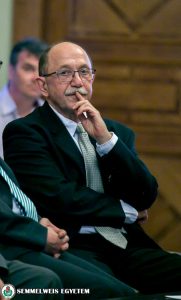 Dr. Lajos Kovács, Head of the Department of Pulmonology and Immunology at the 1st Department of Paediatrics, who conducts the pre- and post-nursing, told us that he had first been on a study trip in Vienna in 2004 to start the organization of therapeutic possibilities for cystic fibrosis in Hungary. In 2005, the first Hungarian child was lung transplanted in Vienna, and since then 25 lung transplants have been carried out. The aftercare of children takes place in their home country.
Dr. Lajos Kovács, Head of the Department of Pulmonology and Immunology at the 1st Department of Paediatrics, who conducts the pre- and post-nursing, told us that he had first been on a study trip in Vienna in 2004 to start the organization of therapeutic possibilities for cystic fibrosis in Hungary. In 2005, the first Hungarian child was lung transplanted in Vienna, and since then 25 lung transplants have been carried out. The aftercare of children takes place in their home country.
Dr. Jenő Elek, Head of NIO Anaesthesiology and Central Intensive Therapy Department, who also performs the anaesthetic and intensive therapeutic treatment of the patient, drew attention to the fact that, in the case of adults, tens of thousands of lung transplants are carried out annually throughout the world, while in the case of children, fewer than 100 interventions are performed, and 1 or 2 patients are operated on in Vienna every year. Regarding Dorka Máté’s case, he explained that during the intervention everything was going well, and the little girl smiled four days after the surgery. Such an operation is a kind of rebirth, said Dr. Jenő Elek, pointing out how significantly the patient’s quality of life improves after the intervention.
We give lives by lung transplantation and brand new techniques are introduced into the Hungarian healthcare, said Dr. Ferenc Rényi-Vámos, Professor at Thoracic Surgery Department of Semmelweis University, emphasizing that among the neighbouring countries similar operations are only performed in Vienna. The head of the Thoracic Surgery Department recalled the introduction of the lung transplant programme in Hungary and finally emphasized that the biggest merit belongs to Dorka, whose serene attitude is an example for everybody.
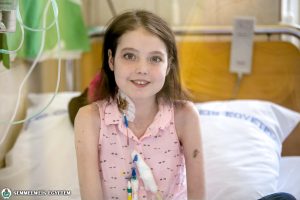 The surgery was a huge relief for me, Dorka Máté said in a live video interview, and reported that she was already able to walk alone and her breathing function had doubled compared to the pre-operation condition. The 13-year-old girl has been hospitalized since September, so she took the opportunity to send messages to her friends and family. She also added she had a bucket list: she would like to learn to ski, travel a lot, get to Australia and make up for the past 13 years.
The surgery was a huge relief for me, Dorka Máté said in a live video interview, and reported that she was already able to walk alone and her breathing function had doubled compared to the pre-operation condition. The 13-year-old girl has been hospitalized since September, so she took the opportunity to send messages to her friends and family. She also added she had a bucket list: she would like to learn to ski, travel a lot, get to Australia and make up for the past 13 years.
Eszter Keresztes
Photo: Attila Kovács
Translation: Diána Módos, Edina Szendreiné Nagy
